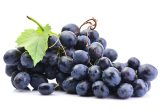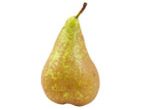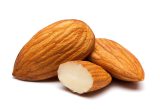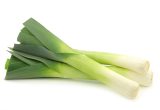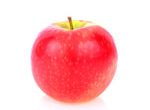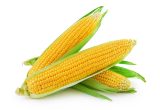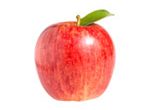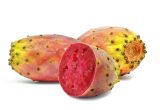Onion squash

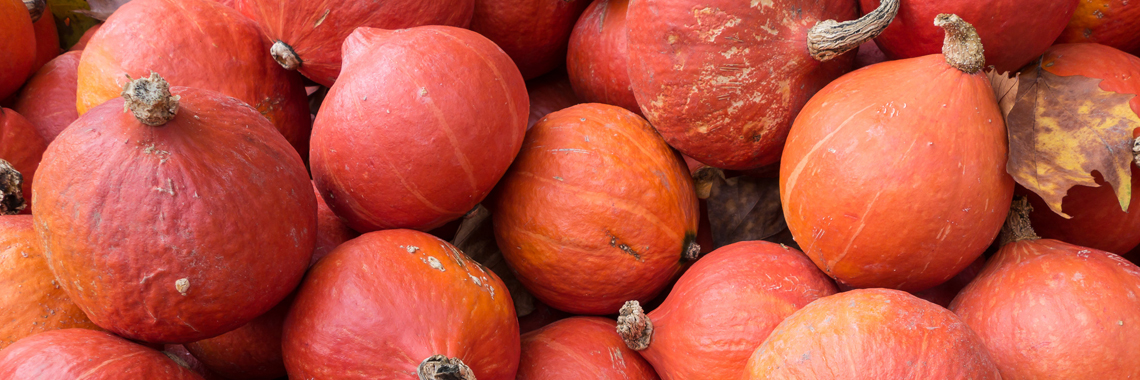
Description
- The onion squash belongs to the Cucurbitaceae family, genus Cucurbita, species Cucurbita maxima.
- Onion squash is produced all over the world and has long been used for traditional medicine in many countries, such as China, Argentina, India, Mexico, Brazil and Korea (Kim, 2012).
- It is available all year round, but is most easily found from September to March, with the peak season being from October to January (Interfel, 2020).
PHYSICAL AND ORGANOLEPTIC CHARACTERISTICS
- Pear-shaped, the onion squash has a rounded stalk. It has a spongy appearance and its ribs are not marked.
- Its orange colour is due to its richness in carotenoids and the presence of triterpene. It varies from pale yellow to bright orange as it ripens (Kikuchi, 2014).
- It usually weighs between 2 and 3 kg and can be eaten cooked or raw. It is not necessary to peel it to cook it.
COMPOSITION CHARACTERISTICS (excluding macronutrients, vitamins and minerals)
- According to a study on the flavonoid content of 62 tropical edible plants, onion squash is the only species to contain flavonoids in the form of kaempferol at 371 mg/kg dry weight (Miean, 2001). These have a wide range of pharmacological activities, including anticancer, cardio-protective, neuro-protective, and anti-diabetic (Calderón-Montaño, 2011).
- The flesh but also the seeds and skin of the onion squash contain antioxidants, such as vitamin E, which prevent the oxidation of unsaturated fatty acids in the cell membrane (Kim, 2012).
- In addition, the seeds are richer in β-carotene than other cucurbits and help to reduce skin damage caused by the sun (Kim, 2012).
- The presence of non-pectin polysaccharides and pectins gives it a hypoglycemic effect. Thus, a recent study conducted on patients with severe diabetes observed a decrease in serum glucose levels associated with a reduction in insulin doses through administration of 5 g of onion squash powder per 12 h for 3 consecutive days (Mahmoodpoor, 2018).
- Numerous studies have shown the therapeutic benefit of onion squash in different areas such as urinary incontinence (Nishimura, 2014), digestive disorders (Menendez-Baceta, 2014) or cancer pathologies (Agyare, 2018).
RAW
The following values are approximate and depend on variety, season, ripeness, cultivation conditions, etc. Raw onion squash is low in energy* as it provides an average of 17.90 calories (kcal) per 100 g, i.e. 75.20 kJ.
COMPOSITION TABLES
For each nutrient, the tables provide information on the content, minimum and maximum values, as well as the percentage of the Dietary Reference Values (DRVs) for 100 g net of raw onion squash (pulp, without skin).
* Regulation (EC) No 1924/2006 of the European Parliament and of the Council of 20 December 2006 on nutrition and health claims made on foods.
MACRONUTRIENTS
| Constituent (g) | Average content |
Min-Max per 100g |
DRV% |
|---|---|---|---|
| Water | 94,6 | 0 - NC | - |
| Fibers | 1,10 | - | - |
| Carbohydrates | 3,10 | - | 1,19 |
| Sugars | - | - | - |
| Lipids | 0,10 | - | 0,14 |
| Saturated fat | 0,027 | - | 0,14 |
| Protein | 0,63 | - | 1,26 |
| Constituent (g) | Amount | Min-Max | DRV% |
|---|---|---|---|
| Water | Ciqual 2020 | - | - |
| Fibers | Ciqual 2020 | - | - |
| Carbohydrates | Ciqual 2020 | - | Règlement (UE) N°1169/2011 du parlement Européen et du conseil du 25 octobre 2011 |
| Sugars | Ciqual 2020 | - | Règlement (UE) N°1169/2011 du parlement Européen et du conseil du 25 octobre 2011 |
| Lipids | Ciqual 2020 | - | Règlement (UE) N°1169/2011 du parlement Européen et du conseil du 25 octobre 2011 |
| Saturated fat | Ciqual 2020 | - | Règlement (UE) N°1169/2011 du parlement Européen et du conseil du 25 octobre 2011 |
| Protein | Ciqual 2020 | - | Règlement (UE) N°1169/2011 du parlement Européen et du conseil du 25 octobre 2011 |
Zoom on carbohydrates
- Raw onion squash provides 3.10 g of carbohydrates per 100 g.
- This is lower than the average amount of carbohydrates in raw vegetables: about 3.45 g per 100 g.
- Most of this is starch (2.26 g per 100 g).
Zoom on fibres
- Raw onion squash contains less fibre (1.10 g per 100 g) than the average amount found in raw vegetables (2.43 g per 100 g).
Zoom on proteins
- Its protein content (0.63 g per 100 g) is lower than the average amount found in raw vegetables (1.87 g per 100 g).
Zoom on lipids
- The amount of fat in raw onion squash (0.10 g per 100 g) is lower than the average amount in raw vegetables (0.56 g per 100 g).
MINERALS AND TRACE ELEMENTS
| Constituent | Average content |
Min-Max per 100g |
DRV% |
|---|---|---|---|
| Calcium (mg) | 18,50 | 4,16 - 33 | 2,31 |
| Chloride (mg) | - | - | - |
| Copper (mg) | 0,029 | 0,026 - 0,08 | 2,90 |
| Iron (mg) | 0,27 | 0,16 - 0,39 | 1,93 |
| Iodine (µg) | 0,15 | 0,02 - 0,30 | 0,10 |
| Magnesium (mg) | 7,13 | 5,83 - 19,60 | 1,90 |
| Manganese (mg) | 0,038 | 0,016 - 0,061 | 1,90 |
| Phosphorus (mg) | 33 | 14,60 - 56,90 | 4,71 |
| Potassium (mg) | 243 | 131 - 458 | 12,15 |
| Selenium (µg) | < 3,35 | 2,20 - NC | - |
| Sodium (mg) | 29,70 | 1,70 - NC | - |
| Zinc (mg) | 0,11 | 0,094 - 0,20 | 1,10 |
| Constituent | Amount | Min-Max | DRV% |
|---|---|---|---|
| Calcium (mg) | Ciqual 2020 | - | Règlement (UE) N°1169/2011 du parlement Européen et du conseil du 25 octobre 2011 |
| Chloride (mg) | Ciqual 2020 | - | Règlement (UE) N°1169/2011 du parlement Européen et du conseil du 25 octobre 2011 |
| Copper (mg) | Ciqual 2020 | - | Règlement (UE) N°1169/2011 du parlement Européen et du conseil du 25 octobre 2011 |
| Iron (mg) | Ciqual 2020 | - | Règlement (UE) N°1169/2011 du parlement Européen et du conseil du 25 octobre 2011 |
| Iodine (µg) | Ciqual 2020 | - | Règlement (UE) N°1169/2011 du parlement Européen et du conseil du 25 octobre 2011 |
| Magnesium (mg) | Ciqual 2020 | - | Règlement (UE) N°1169/2011 du parlement Européen et du conseil du 25 octobre 2011 |
| Manganese (mg) | Ciqual 2020 | - | Règlement (UE) N°1169/2011 du parlement Européen et du conseil du 25 octobre 2011 |
| Phosphorus (mg) | Ciqual 2020 | - | Règlement (UE) N°1169/2011 du parlement Européen et du conseil du 25 octobre 2011 |
| Potassium (mg) | Ciqual 2020 | - | Règlement (UE) N°1169/2011 du parlement Européen et du conseil du 25 octobre 2011 |
| Selenium (µg) | Ciqual 2020 | - | Règlement (UE) N°1169/2011 du parlement Européen et du conseil du 25 octobre 2011 |
| Sodium (mg) | Ciqual 2020 | - | - |
| Zinc (mg) | Ciqual 2020 | - | Règlement (UE) N°1169/2011 du parlement Européen et du conseil du 25 octobre 2011 |
Zoom on minerals and trace elements
- Raw onion squash contains a significant amount of potassium. It provides the equivalent of 12.15% of DRVs, i.e. 243 mg per 100 g.
- The amount of other minerals and trace elements is less than 5% of DRVs.
* Calculation made: Beta Carotene / 6 + retinol
VITAMINS
| Constituent | Average content |
Min-Max per 100g |
DRV% |
|---|---|---|---|
| Provitamin A Beta-carotene (µg) | - | - | - |
| Vitamin A equivalent (µg) | - | - | - |
| Vitamin B1 (mg) | 0,05 | - | 4,55 |
| Vitamin B2 (mg) | 0,02 | 0,014 - 0,021 | 1,43 |
| Vitamin B3 (mg) | 0,20 | NC - 0,24 | 1,25 |
| Vitamin B5 (mg) | 0,40 | - | 6,67 |
| Vitamin B6 (mg) | 0,05 | 0,041 - 0,068 | 3,57 |
| Vitamin B9 (µg) | 36 | - | 18 |
| Vitamin C (mg) | 5 | - | 6,25 |
| Vitamin E (mg) | 0,10 | 0,06 - 0,18 | 0,83 |
| Vitamin K1 (µg) | - | - | - |
| Constituent | Amount | Min-Max | DRV% |
|---|---|---|---|
| Provitamin A Beta-carotene (µg) | Ciqual 2020 | - | - |
| Vitamin A equivalent (µg) | Calcul à partir de la valeur Provitamine A Béta-carotène* | - | Règlement (UE) N°1169/2011 du parlement Européen et du conseil du 25 octobre 2011 |
| Vitamin B1 (mg) | Ciqual 2020 | - | Règlement (UE) N°1169/2011 du parlement Européen et du conseil du 25 octobre 2011 |
| Vitamin B2 (mg) | Ciqual 2020 | - | Règlement (UE) N°1169/2011 du parlement Européen et du conseil du 25 octobre 2011 |
| Vitamin B3 (mg) | Ciqual 2020 | - | Règlement (UE) N°1169/2011 du parlement Européen et du conseil du 25 octobre 2011 |
| Vitamin B5 (mg) | Ciqual 2020 | - | Règlement (UE) N°1169/2011 du parlement Européen et du conseil du 25 octobre 2011 |
| Vitamin B6 (mg) | Ciqual 2020 | - | Règlement (UE) N°1169/2011 du parlement Européen et du conseil du 25 octobre 2011 |
| Vitamin B9 (µg) | Ciqual 2020 | - | Règlement (UE) N°1169/2011 du parlement Européen et du conseil du 25 octobre 2011 |
| Vitamin C (mg) | Ciqual 2020 | - | Règlement (UE) N°1169/2011 du parlement Européen et du conseil du 25 octobre 2011 |
| Vitamin E (mg) | Ciqual 2020 | - | Règlement (UE) N°1169/2011 du parlement Européen et du conseil du 25 octobre 2011 |
| Vitamin K1 (µg) | Ciqual 2020 | - | Règlement (UE) N°1169/2011 du parlement Européen et du conseil du 25 octobre 2011 |
Zoom on vitamins
- Raw onion squash is a source of vitamin B9 because it provides the equivalent of 18% of DRVs, i.e. 36 µg per 100 g.
- It provides the equivalent of:
- 6.67% of DRVs for vitamin B5, i.e. 0.40 mg per 100 g;
- 6.25% of DRVs for vitamin C, i.e. 5 mg per 100 g.
- The quantity of other vitamins represents less than 5% of DRVs.
POLYPHENOLS
BOILED
The following values are approximate and depend on variety, season, ripeness, cultivation conditions, etc. Boiled onion squash is low in energy*. On average it provides 38.20 calories (kcal) per 100 g, i.e. 161 kJ.
COMPOSITION TABLES
For each nutrient, the tables provide information on the content, minimum and maximum values, as well as the percentage of the Dietary Reference Values (DRVs) for 100 g net of boiled onion squash (pulp, without skin).
* Regulation (EC) No 1924/2006 of the European Parliament and of the Council of 20 December 2006 on nutrition and health claims made on foods.
MACRONUTRIENTS
| Constituent (g) | Average content |
Min-Max per 100g |
DRV% |
|---|---|---|---|
| Water | 88,9 | - | - |
| Fibers | 1,80 | - | - |
| Carbohydrates | 6,88 | - | 2,65 |
| Sugars | 3,50 | - | 3,89 |
| Lipids | 0,30 | - | 0,43 |
| Saturated fat | 0,08 | - | 0,40 |
| Protein | 1,06 | NC - 1,10 | 2,12 |
| Constituent (g) | Amount | Min-Max | DRV% |
|---|---|---|---|
| Water | Ciqual 2020 (valeur issue des analyses Ciqual-Aprifel 2018) | - | - |
| Fibers | Ciqual 2020 (valeur issue des analyses Ciqual-Aprifel 2018) | - | - |
| Carbohydrates | Ciqual 2020 | - | Règlement (UE) N°1169/2011 du parlement Européen, et du conseil du 25 octobre 2011 |
| Sugars | Ciqual 2020 (valeur issue des analyses Ciqual-Aprifel 2018) | - | Règlement (UE) N°1169/2011 du parlement Européen et du conseil du 25 octobre 2011 |
| Lipids | Ciqual 2020 (valeur issue des analyses Ciqual-Aprifel 2018) | - | Règlement (UE) N°1169/2011 du parlement Européen et du conseil du 25 octobre 2011 |
| Saturated fat | Ciqual 2020 (valeur issue des analyses Ciqual-Aprifel 2018) | - | Règlement (UE) N°1169/2011 du parlement Européen et du conseil du 25 octobre 2011 |
| Protein | Ciqual 2020 | - | Règlement (UE) N°1169/2011 du parlement Européen et du conseil du 25 octobre 2011 |
Zoom on carbohydrates
- Boiled onion squash contains 6.88 g of carbohydrates per 100 g.
- This is higher than the average amount of carbohydrates in cooked vegetables: about 4.85 g per 100 g.
- These include glucose (1.30 g per 100 g), starch (1.20 g per 100 g), fructose (1.10 g per 100 g) and sucrose (1.10 g per 100 g).
Zoom on fibres
- Boiled onion squash contains 1.80 g of fibre.
- This amount is below the average quantity found in cooked vegetables (2.89 g per 100 g).
Zoom on proteins
- Its protein content (1.06 g per 100 g) is lower than the average amount found in cooked vegetables (2 g per 100 g).
Zoom on lipids
- The amount of fat in boiled onion squash (0.30 g per 100 g) is lower than the average quantity in cooked vegetables (0.53 g per 100 g).
MINERALS AND TRACE ELEMENTS
| Constituent | Average content |
Min-Max per 100g |
DRV% |
|---|---|---|---|
| Calcium (mg) | 18 | - | 2,25 |
| Chloride (mg) | 61,98 | - | 7,75 |
| Copper (mg) | 0,08 | - | 8 |
| Iron (mg) | 0,19 | - | 1,36 |
| Iodine (µg) | < 20 | - | - |
| Magnesium (mg) | 8,50 | - | 2,27 |
| Manganese (mg) | 0,06 | - | 3 |
| Phosphorus (mg) | 27 | - | 3,86 |
| Potassium (mg) | 330 | - | 16,50 |
| Selenium (µg) | < 20 | - | - |
| Sodium (mg) | < 5 | - | - |
| Zinc (mg) | 0,24 | - | 2,40 |
| Constituent | Amount | Min-Max | DRV% |
|---|---|---|---|
| Calcium (mg) | Ciqual 2020 (valeur issue des analyses Ciqual-Aprifel 2018) | - | Règlement (UE) N°1169/2011 du parlement Européen et du conseil du 25 octobre 2011 |
| Chloride (mg) | Ciqual 2020 (valeur issue des analyses Ciqual-Aprifel 2018) | - | Règlement (UE) N°1169/2011 du parlement Européen et du conseil du 25 octobre 2011 |
| Copper (mg) | Ciqual 2020 (valeur issue des analyses Ciqual-Aprifel 2018) | - | Règlement (UE) N°1169/2011 du parlement Européen et du conseil du 25 octobre 2011 |
| Iron (mg) | Ciqual 2020 (valeur issue des analyses Ciqual-Aprifel 2018) | - | Règlement (UE) N°1169/2011 du parlement Européen et du conseil du 25 octobre 2011 |
| Iodine (µg) | Ciqual 2020 (valeur issue des analyses Ciqual-Aprifel 2018) | - | Règlement (UE) N°1169/2011 du parlement Européen et du conseil du 25 octobre 2011 |
| Magnesium (mg) | Ciqual 2020 (valeur issue des analyses Ciqual-Aprifel 2018) | - | Règlement (UE) N°1169/2011 du parlement Européen et du conseil du 25 octobre 2011 |
| Manganese (mg) | Ciqual 2020 (valeur issue des analyses Ciqual-Aprifel 2018) | - | Règlement (UE) N°1169/2011 du parlement Européen et du conseil du 25 octobre 2011 |
| Phosphorus (mg) | Ciqual 2020 (valeur issue des analyses Ciqual-Aprifel 2018) | - | Règlement (UE) N°1169/2011 du parlement Européen et du conseil du 25 octobre 2011 |
| Potassium (mg) | Ciqual 2020 (valeur issue des analyses Ciqual-Aprifel 2018) | - | Règlement (UE) N°1169/2011 du parlement Européen et du conseil du 25 octobre 2011 |
| Selenium (µg) | Ciqual 2020 (valeur issue des analyses Ciqual-Aprifel 2018) | - | Règlement (UE) N°1169/2011 du parlement Européen et du conseil du 25 octobre 2011 |
| Sodium (mg) | Ciqual 2020 (valeur issue des analyses Ciqual-Aprifel 2018) | - | - |
| Zinc (mg) | Ciqual 2020 (valeur issue des analyses Ciqual-Aprifel 2018) | - | Règlement (UE) N°1169/2011 du parlement Européen et du conseil du 25 octobre 2011 |
Zoom on minerals and trace elements
- Boiled onion squash is a source of potassium as it provides the equivalent of 16.50% of DRVs, i.e. 330 mg per 100 g.
- It also provides the equivalent of:
- 8% of DRVs for copper, i.e. 0.08 mg per 100 g;
- 7.75% of DRVs for chloride, i.e. 61.98 mg per 100 g.
- The amount of other minerals and trace elements is less than 5% of DRVs.
VITAMINS
| Constituent | Average content |
Min-Max per 100g |
DRV% |
|---|---|---|---|
| Provitamin A Beta-carotene (µg) | 5 310 | - | - |
| Vitamin A equivalent (µg) | 885 | - | 110,63 |
| Vitamin B1 (mg) | < 0,015 | - | - |
| Vitamin B2 (mg) | < 0,01 | - | - |
| Vitamin B3 (mg) | 0,74 | - | 4,63 |
| Vitamin B5 (mg) | 0,29 | - | 4,83 |
| Vitamin B6 (mg) | 0,06 | - | 4,29 |
| Vitamin B9 (µg) | 9,28 | - | 4,64 |
| Vitamin C (mg) | 8,65 | - | 10,81 |
| Vitamin E (mg) | 1,52 | - | 12,67 |
| Vitamin K1 (µg) | 3,17 | - | 4,23 |
| Constituent | Amount | Min-Max | DRV% |
|---|---|---|---|
| Provitamin A Beta-carotene (µg) | Ciqual 2020 (valeur issue des analyses Ciqual-Aprifel 2018) | - | Règlement (UE) N°1169/2011 du parlement Européen, et du conseil du 25 octobre 2011 |
| Vitamin A equivalent (µg) | Calcul à partir de la valeur Provitamine A Béta-carotène* | - | Règlement (UE) N°1169/2011 du parlement Européen, et du conseil du 25 octobre 2011 |
| Vitamin B1 (mg) | Ciqual 2020 (valeur issue des analyses Ciqual-Aprifel 2018) | - | Règlement (UE) N°1169/2011 du parlement Européen et du conseil du 25 octobre 2011 |
| Vitamin B2 (mg) | Ciqual 2020 (valeur issue des analyses Ciqual-Aprifel 2018) | - | Règlement (UE) N°1169/2011 du parlement Européen et du conseil du 25 octobre 2011 |
| Vitamin B3 (mg) | Ciqual 2020 (valeur issue des analyses Ciqual-Aprifel 2018) | - | Règlement (UE) N°1169/2011 du parlement Européen et du conseil du 25 octobre 2011 |
| Vitamin B5 (mg) | Ciqual 2020 (valeur issue des analyses Ciqual-Aprifel 2018) | - | Règlement (UE) N°1169/2011 du parlement Européen et du conseil du 25 octobre 2011 |
| Vitamin B6 (mg) | Ciqual 2020 (valeur issue des analyses Ciqual-Aprifel 2018) | - | Règlement (UE) N°1169/2011 du parlement Européen, et du conseil du 25 octobre 2011 |
| Vitamin B9 (µg) | Ciqual 2020 (valeur issue des analyses Ciqual-Aprifel 2018) | - | Règlement (UE) N°1169/2011 du parlement Européen et du conseil du 25 octobre 2011 |
| Vitamin C (mg) | Ciqual 2020 (valeur issue des analyses Ciqual-Aprifel 2018) | - | Règlement (UE) N°1169/2011 du parlement Européen et du conseil du 25 octobre 2011 |
| Vitamin E (mg) | Ciqual 2020 (valeur issue des analyses Ciqual-Aprifel 2018) | - | Règlement (UE) N°1169/2011 du parlement Européen et du conseil du 25 octobre 2011 |
| Vitamin K1 (µg) | Ciqual 2020 (valeur issue des analyses Ciqual-Aprifel 2018) | - | Règlement (UE) N°1169/2011 du parlement Européen et du conseil du 25 octobre 2011 |
Zoom on vitamins
- Boiled onion squash is high in vitamin A because it provides the equivalent of 110.63% of DRVs, i.e. 885 µg per 100 g.
- It contains a significant amount of vitamin E and vitamin C. It provides the equivalent of:
- 12.67% of DRVs for vitamin E, i.e. 1.52 mg per 100 g;
- 10.81% of DRVs for vitamin C, i.e. 8.65 mg per 100 g.
- The quantity of other vitamins represents less than 5% of DRVs.
POLYPHENOLS
Nutrition and health claims
According to the definitions of nutrition claims as set out in Regulation (EC) No 1924/2006 on nutrition and health claims, and in view of the composition of raw onion squash, the following claims may be used:
NUTRITION CLAIMS RAW ONION SQUASH
- Low in energy (100 g of raw onion squash provide less than 40 kcal)
- Low in sugar (100 g of raw onion squash contain less than 5 g of sugar)
- Fat-free (100 g of raw onion squash do not contain more than 0.5 g of fat)
- Source of vitamin B9 (100 g of raw onion squash provide more than 15% of DRVs)
HEALTH CLAIMS (for a consumption of 100 g of raw onion squash)
Folates or vitamin B9
- Folates contribute to:
- maternal tissue growth during pregnancy,
- normal amino acid synthesis,
- normal blood formation,
- normal homocysteine metabolism,
- normal psychological function,
- normal function of the immune system,
- reduction of tiredness and fatigue.
- Folates have a role in the process of cell division.
Nutrition and health claims
According to the definitions of nutrition claims as set out in Regulation (EC) No 1924/2006 on nutrition and health claims, and in view of the composition of boiled onion squash, the following claims may be used:
NUTRITION CLAIMS OF BOILED ONION SQUASH
- Low in energy (100 g of boiled onion squash provide less than 40 kcal)
- Fat-free (100 g of boiled onion squash do not contain more than 0.5 g of fat)
- High in vitamin A (100 g of boiled onion squash provide more than 30% of DRVs)
- Source of potassium (100 g of boiled onion squash provide more than 15% of DRVs)
HEALTH CLAIMS (for a consumption of 100 g of boiled onion squash)
Vitamin A
- Vitamin A has a role in the process of cell specialisation.
- Vitamin A contributes to:
- maintenance of normal skin,
- maintenance of normal mucous membranes,
- maintenance of normal vision,
- normal iron metabolism,
- normal function of the immune system.
Potassium
- Potassium contributes to:
- normal functioning of the nervous system,
- normal muscle function,
- maintenance of normal blood pressure.
References
- Agence nationale de sécurité sanitaire de l’alimentation, de l’environnement et du travail. Table de composition nutritionnelle des aliments Ciqual 2020. Consultée le 24/07/2020 depuis le site internet Ciqual https://ciqual.anses.fr/
- Agence nationale de sécurité sanitaire de l’alimentation, de l’environnement et du travail. Table de composition nutritionnelle des aliments Ciqual pour le calcul des apports nutritionnels CALNUT 2020. Consultée le 22/09/2020 depuis le site internet Ciqual https://ciqual.anses.fr/
- Agyare C, Spiegler V, Asase A, Scholz M, Hempel G, Hensel A. An Ethnopharmacological Survey of Medicinal Plants Traditionally Used for Cancer Treatment in the Ashanti Region, Ghana. Journal of Ethnopharmacology. 2018;212: 137 52.
- Calderón-Montaño JM, Burgos-Morón E, Pérez-Guerrero C, López-Lázaro M. A Review on the Dietary Flavonoid Kaempferol. Mini Reviews in Medicinal Chemistry. 2011;11 (4): 298 344.
- Interfel – Les fruits et légumes frais. 2020. Courges et potirons [en ligne] [consulté le 21/02/2020]
- Kikuchi T, Ueda S, Kanazawa J, Naoe H, Yamada T, Tanaka R. Three New Triterpene Esters from Pumpkin (Cucurbita maxima) Seeds. Molecules. 2014;19 (4): 4802 13.
- Kim MY, Kim EJ, Kim YN, Choi C, Lee BH. Comparison of the chemical compositions and nutritive values of various pumpkin (Cucurbitaceae) species and parts. Nutrition Research and Practice. 2012;6 (1): 21 27.
- Mahmoodpoor A, Medghalchi M, Nazemiyeh H, Asgharian P, Shadvar K, Hamishehkar H. Effect of Cucurbita Maxima on Control of Blood Glucose in Diabetic Critically Ill Patients. Advanced Pharmaceutical Bulletin. 2018;8 (2): 347 51.
- Menendez-Baceta G, Aceituno-Mata L, Molina M, Reyes-García V, Tardío J, Pardo-de-Santayana M. Medicinal Plants Traditionally Used in the Northwest of the Basque Country (Biscay and Alava), Iberian Peninsula. Journal of Ethnopharmacology. 2014;152 (1): 113 34.
- Miean KH, Mohamed S. Flavonoid (Myricetin, Quercetin, Kaempferol, Luteolin, and Apigenin) Content of Edible Tropical Plants. Journal of Agricultural and Food Chemistry. 2001;49 (6): 3106 12.
- Nishimura M, Ohkawara T, Sato H, Takeda H, Nishihira J. Pumpkin Seed Oil Extracted From Cucurbita Maxima Improves Urinary Disorder in Human Overactive Bladder. Journal of Traditional and Complementary Medicine. 2014;4 (1): 72 74.
- Règlement (CE) N° 1924/2006 du Parlement européen et du Conseil du 20 décembre 2006 concernant les allégations nutritionnelles et de santé portant sur les denrées alimentaires.
- Règlement (UE) N°432/2012 de la Commission du 16 mai 2012 établissant une liste des allégations de santé autorisées portant sur les denrées alimentaires, autres que celles faisant référence à la réduction du risque de maladie ainsi qu’au développement et à la santé infantiles.
- Règlement (UE) n°1169/2011 du Parlement européen et du Conseil du 25 octobre 2011 concernant l’information des consommateurs sur les denrées alimentaires, modifiant les règlements (CE) n°1924/2006 et (CE) n°1925/2006 du Parlement européen et de Conseil et abrogeant la directive 87/250/CEE de la Commission, la directive 90/496/CEE du Conseil, la directive 1999/10/CE de la Commission, la directive 200/13/CE du Parlement européen et du Conseil, les directives 2002/67/CE et 2008/5/CE de la Commission et le règlement (CE) n°608/2004 de la Commission.





